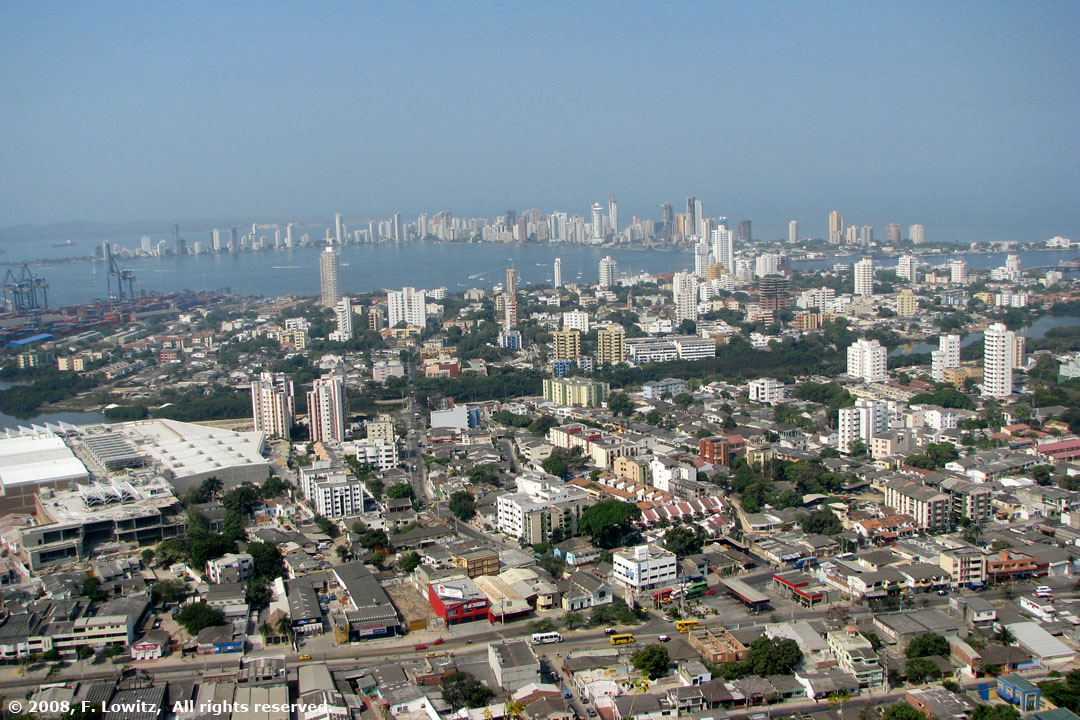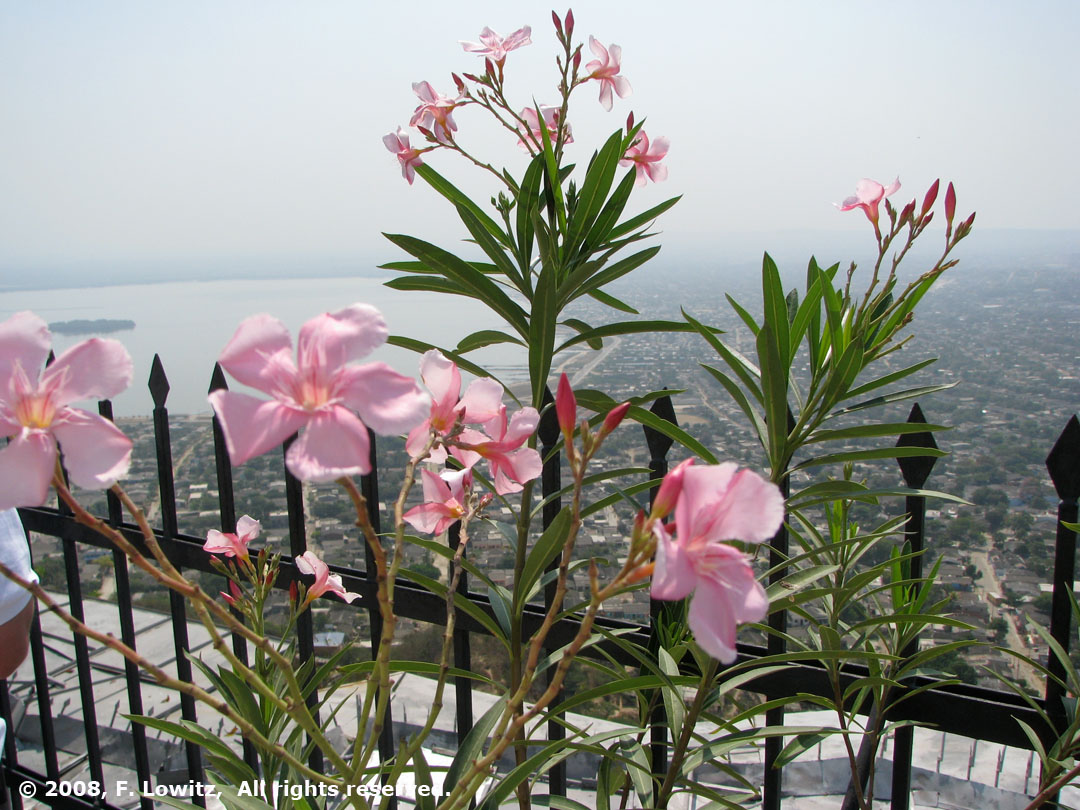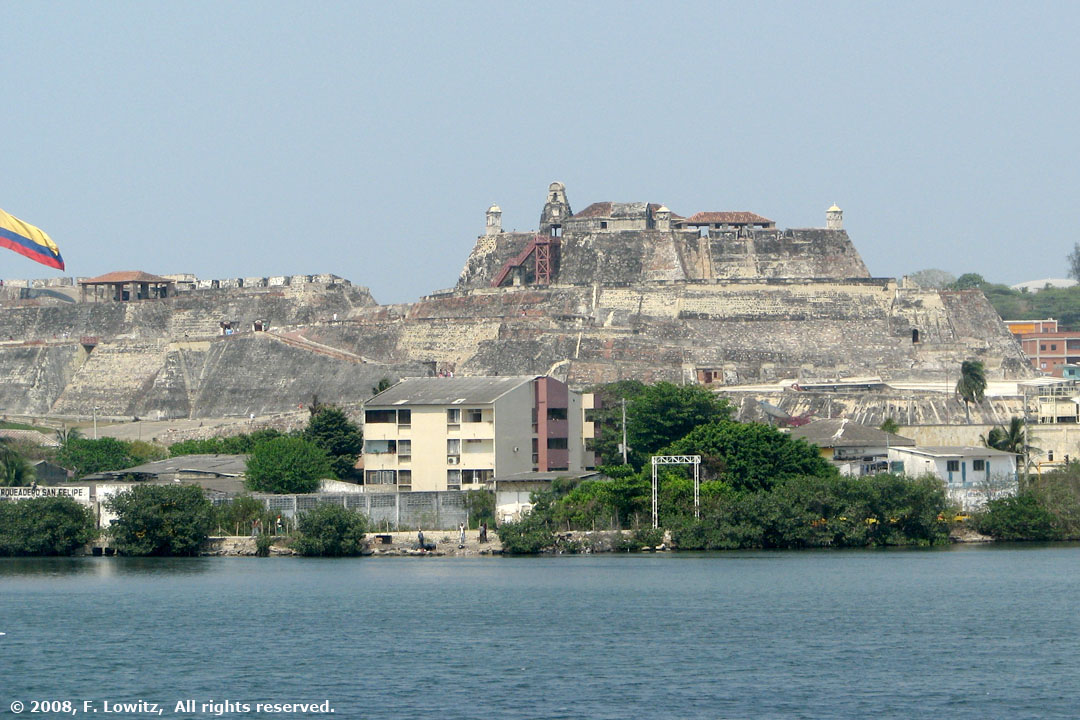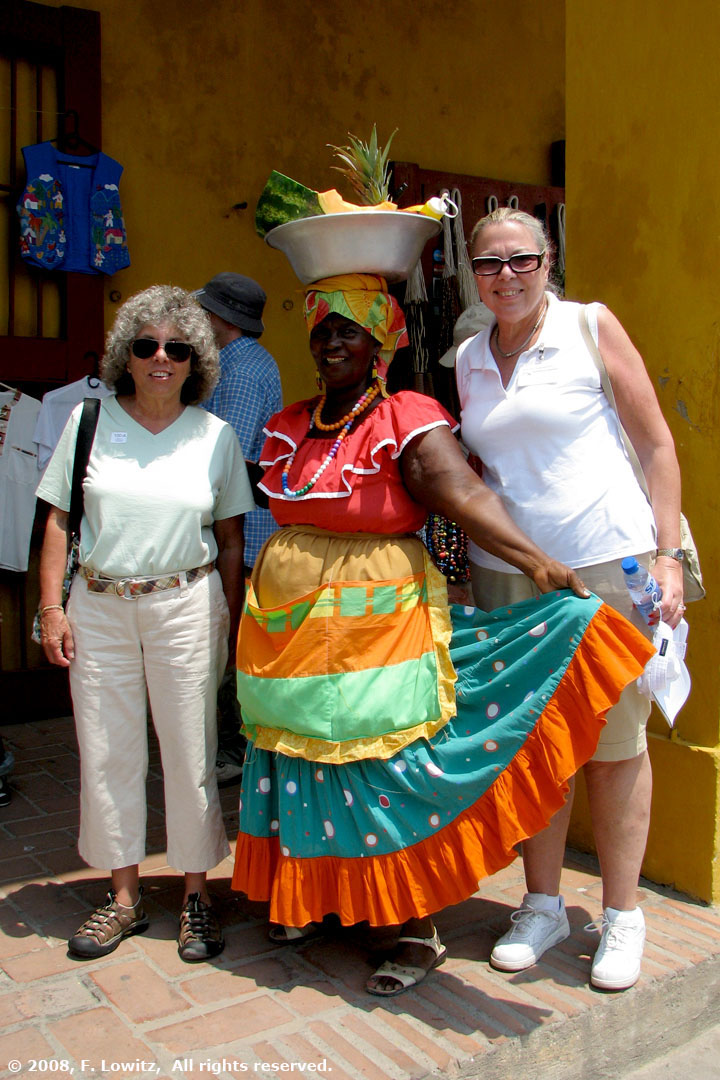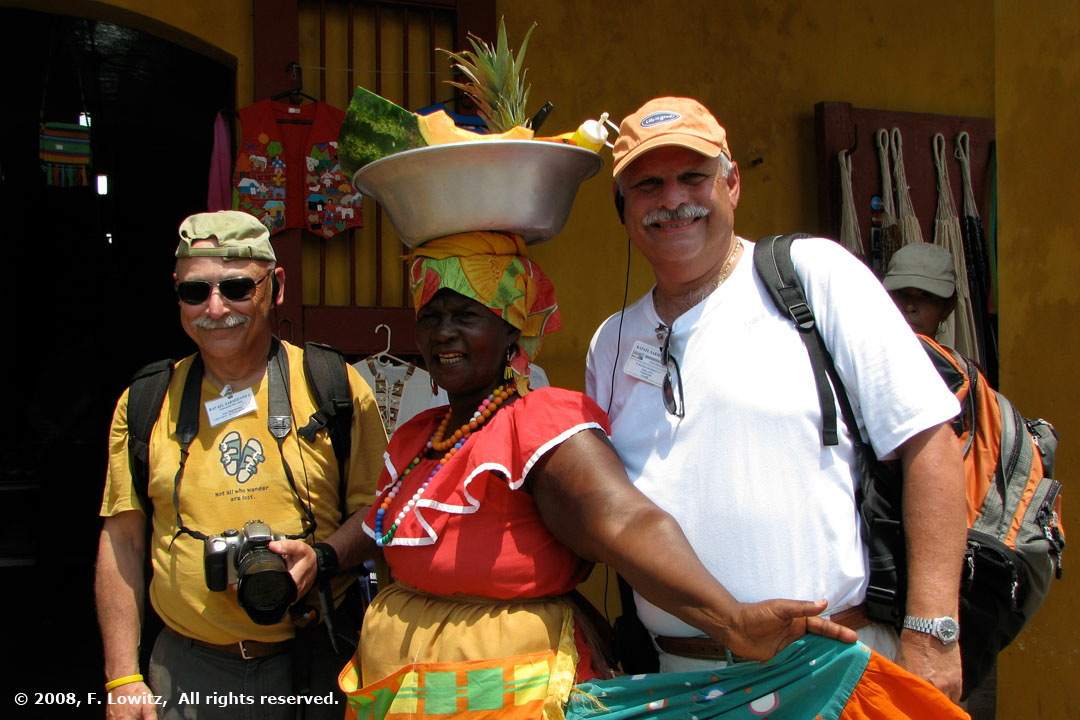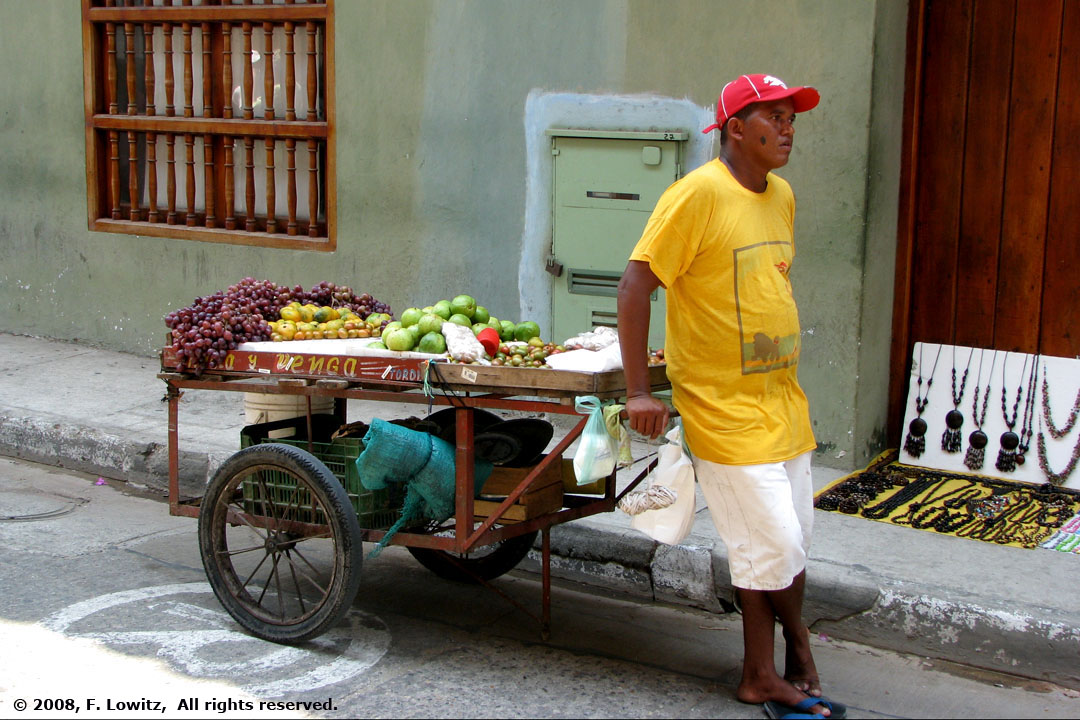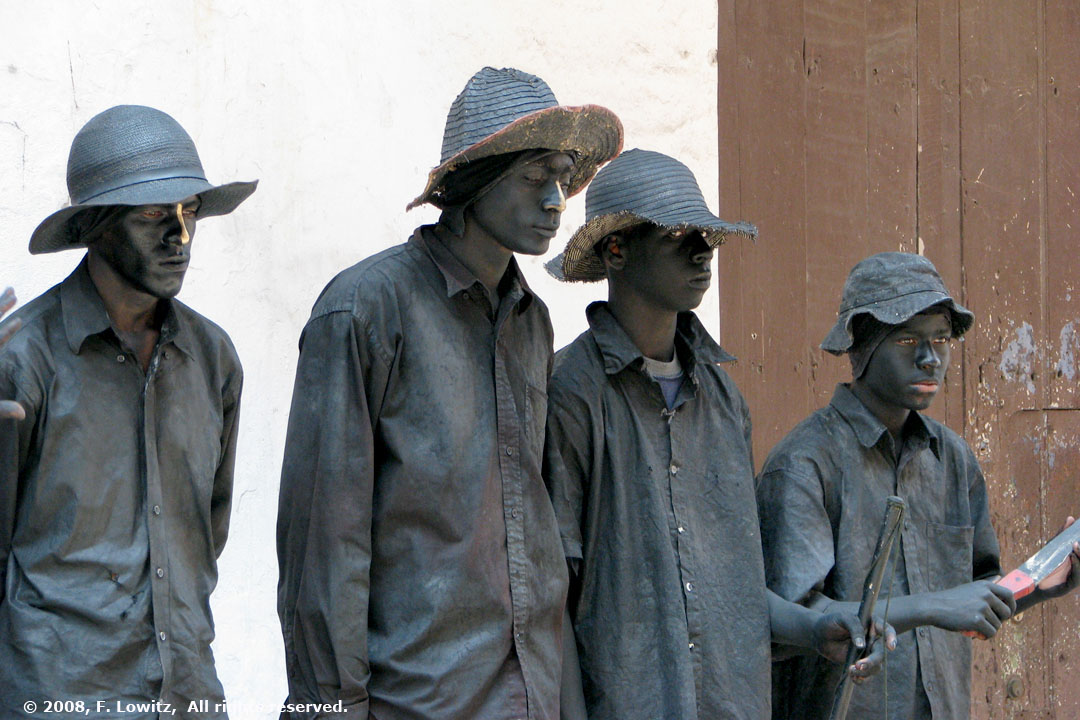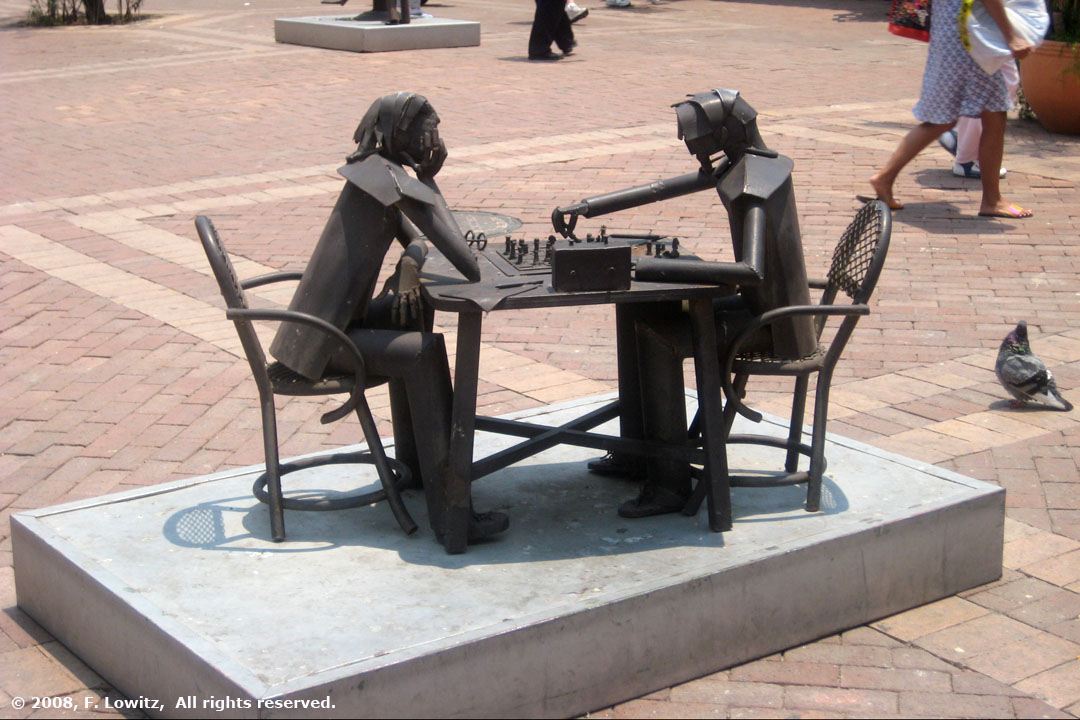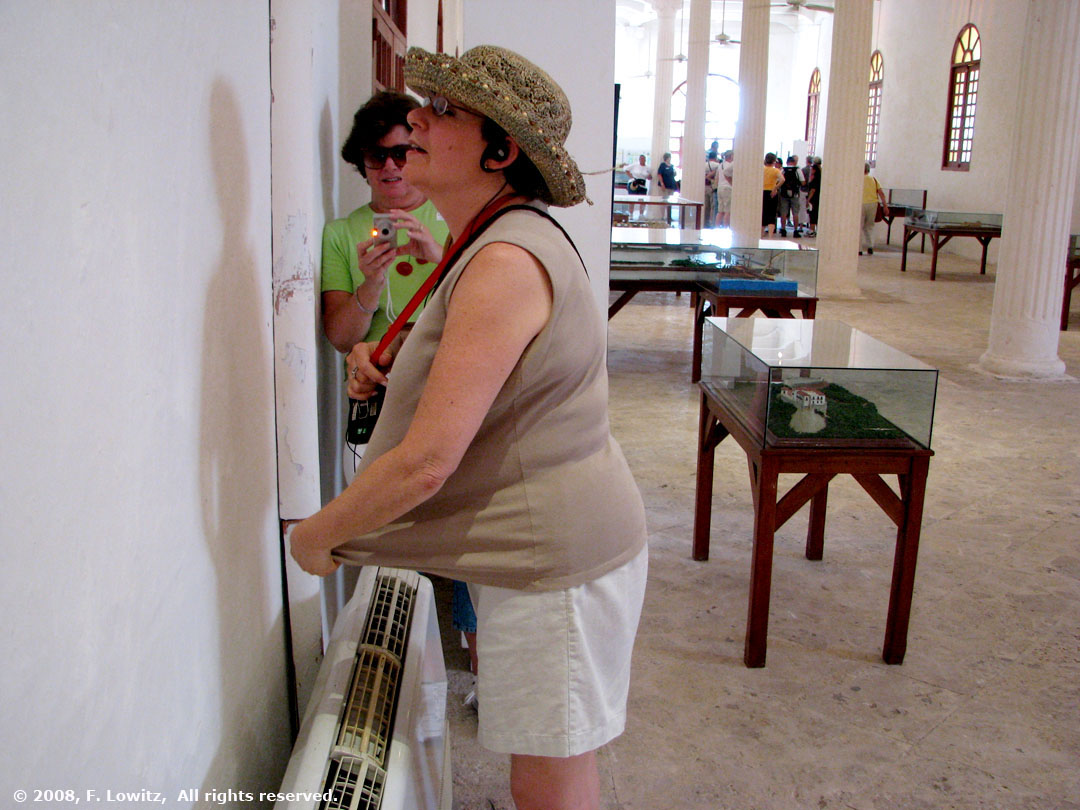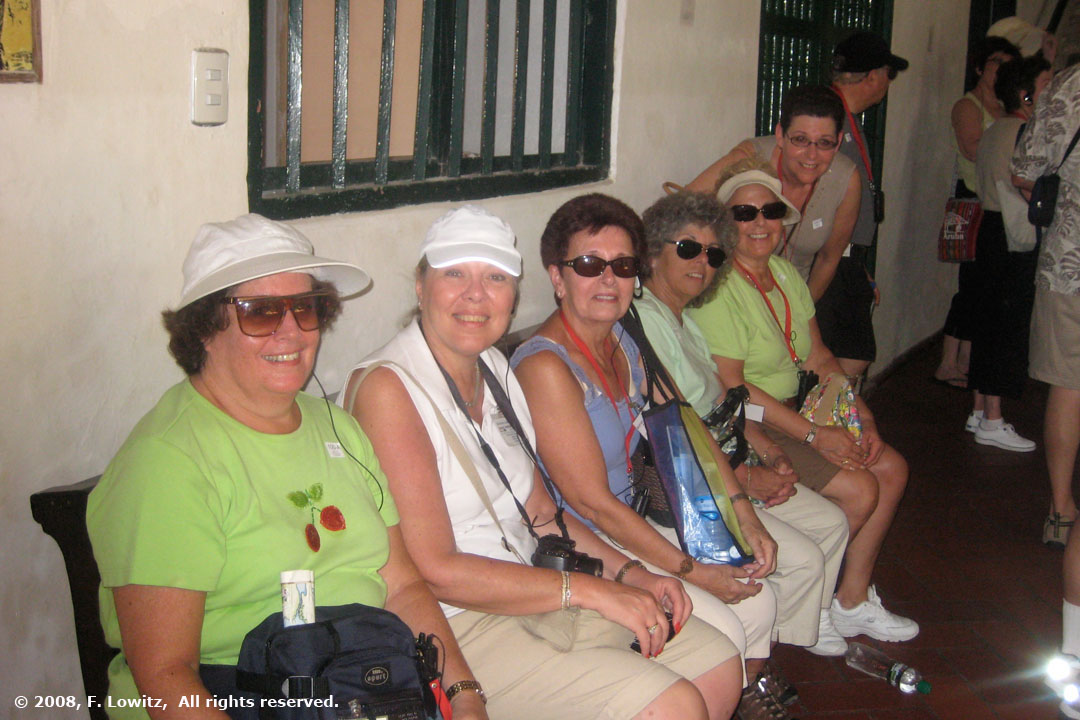
Panama 2008
Cartagena, Colombia
20 March 2008
General Information
Local Map
Photographs and Commentary
click on pictures to enlarge
Cartagena is one of the oldest cities in the Western Hemisphere. It was founded in 1533 and became an important transfer point for gold and silver coming from Peru, Mexico and other Spanish conquests. From Cartagena, this treasure was shipped by galleys to Spain. This made the city a prime target for pirates and the city was besieged several times. The most famous of these sieges was by Sir Francis Drake who made it into the harbor in 1586. He accepted a ransom 10 million pesos not to burn the city. Drake's success forced the Spanish to further improve the defenses of the city. In order to protect the city a wall was built completely around what is now the old city. Additional fortifications were built at the entrance to the harbor and the largest Spanish fortress in the world dominated the harbor area. The cost of these fortifications was over 59 million ounces of gold (gold today is about $1,000 an ounce). The expense paid off when a British fleet of 186 ships and 24,000 men unsuccessfully attacked the city in 1741. Today the city is made up of the old, walled city and a new city that is full of modern high rise buildings and seems to have an ongoing construction boom.
Cartagena treated us with temperatures in the upper 80's and humidity in the upper 90's. We took a tour called, "The Best of Cartagena." This tour took up to a Monastery called La Popa which dates back to the early days of Cartagena. It then took us to the Fortress of San Felipe de Barajas, which involved climbing up to the upper reaches of the fortifications. Considering the weather, that climb caused most to come out of the fortress with clothing soaked with perspiration. The tour then took us to the Old City where we walked through streets with buildings going back to the 16th century. From the Old City we went to the Emerald Market to see what bargains we could find. We walked out of there with $18 in purchases... none of it for emeralds.
To me, the highlight of the trip was the old town. I just wished we had more time to see more... we only got a small sampling of the town. For example, one of the buildings I would have loved to explore is the Inquisition Palace. Cartagena was one of the few places in the Americas to carry out the Inquisition and more than a few were burned at the stake or otherwise tortured and put to death. The building is now a museum and has some information on that period. All we go to do is see it from the square.
EXTRACT FROM THE DECK LOG BOOK
March 20th 2008, Cartagena, Colombia
In the early morning Coral Princess approached the narrow entrance of the Bay of Cartagena through "Boca Chica" and the south end of "Isla Tierra Bomba" where a local pilot boarded at 07:10 to conduct the vessel alongside the inner harbour, and after 12 miles of channel navigation Coral Princess was approaching the pier, started to swing the bow to port and proceeded astern alongside the berth were all lines were fast at 08:54.
Noon Position: Alongside - Cartagena, Colombia
Temperature: 28°C / 82°F
Wind: Westerly Beaufort Force 3.
Barometer: 1 011.4 hPa
Weather conditions: Sunny.
With all passengers on board and again the local pilot, Coral Princess slipped her mooring at 15:06, proceeding out of Cartagena inner harbour setting various courses inside the channel and once out of the bay at 15:50 pilot was disembarked and we resumed the navigation setting a west-south-westerly route bound for the Panama Canal.
New city viewed from the cruise ship terminal
.jpg)
Fortress of San Felipe de Barajas viewed from La Popa Monastery. The old city walls can bee seen beyond the fortress.
Left, La Popa Monastery dates back to the 16th Century. The natives who refused to convert jumped off the cliff below the monastery
Interior courtyard of La Popa Monastery At the center is the cistern that served as the source of water.
The ledges of cliffs below La Popa are now occupied by children asking tourists to throw down a few dollars.
.jpg)
Fortress of San Felipe de Barajas
Left, the sanctuary at La Popa. The original gold guilding was removed and taken to Spain when the Spaniards left.
Above and left, detail of the fortifications at the Fortress of San Felipe de Barajas
.jpg)
.jpg)
Old City walls seen from the fortress.
Left, Tunnels that led from the fortress under the water to the Old City. The tunnels were laid out with niches that concealed soldiers. The field of fire was designed so that bullets fired by the soldiers could ricochet and hit the attackers and miss the soldiers in adjacent niches.
OLD CITY SCENES
Many of the old city buildings date back to the 16th century. They are beautifully maintained
.jpg)
.jpg)
.jpg)
.jpg)
Park Bolivar, Named after General Simon Bolivar who liberated the city in 1811
Above, Inquisition Palace. During the colonial era , this house served as a tribunal "court" and tried anyone the Church viewed as a heretic.
Right, The Church of Saint Peter Claver.
.jpg)
.jpg)
Above, The remains of Saint Peter Claver, the first saint canonized in the Western Hemisphere. Peter Claver worked to protect black slaves.
Left, The Sanctuary at the Church of Saint Peter Claver.
The Black Madonna
View from La Popa Monastery
Another view from La Popa Monastery
La Popa Monastery Courtyard
Fortress of San Felipe de Barajas seen from old city
Mel and Sam with the basket lady
Fran and Susie with a basket lady... one pose for one dollar
Fruit Vendor in old city
Living statues in old city
Plaza of San Pedro Claver in old city
Cooling off
Taking a break in the Sanctuary of San Pedro Claver
.jpg)
.jpg)
.jpg)
.jpg)
.jpg)
.jpg)
.jpg)
.jpg)
.jpg)
.jpg)
.jpg)
.jpg)
.jpg)
